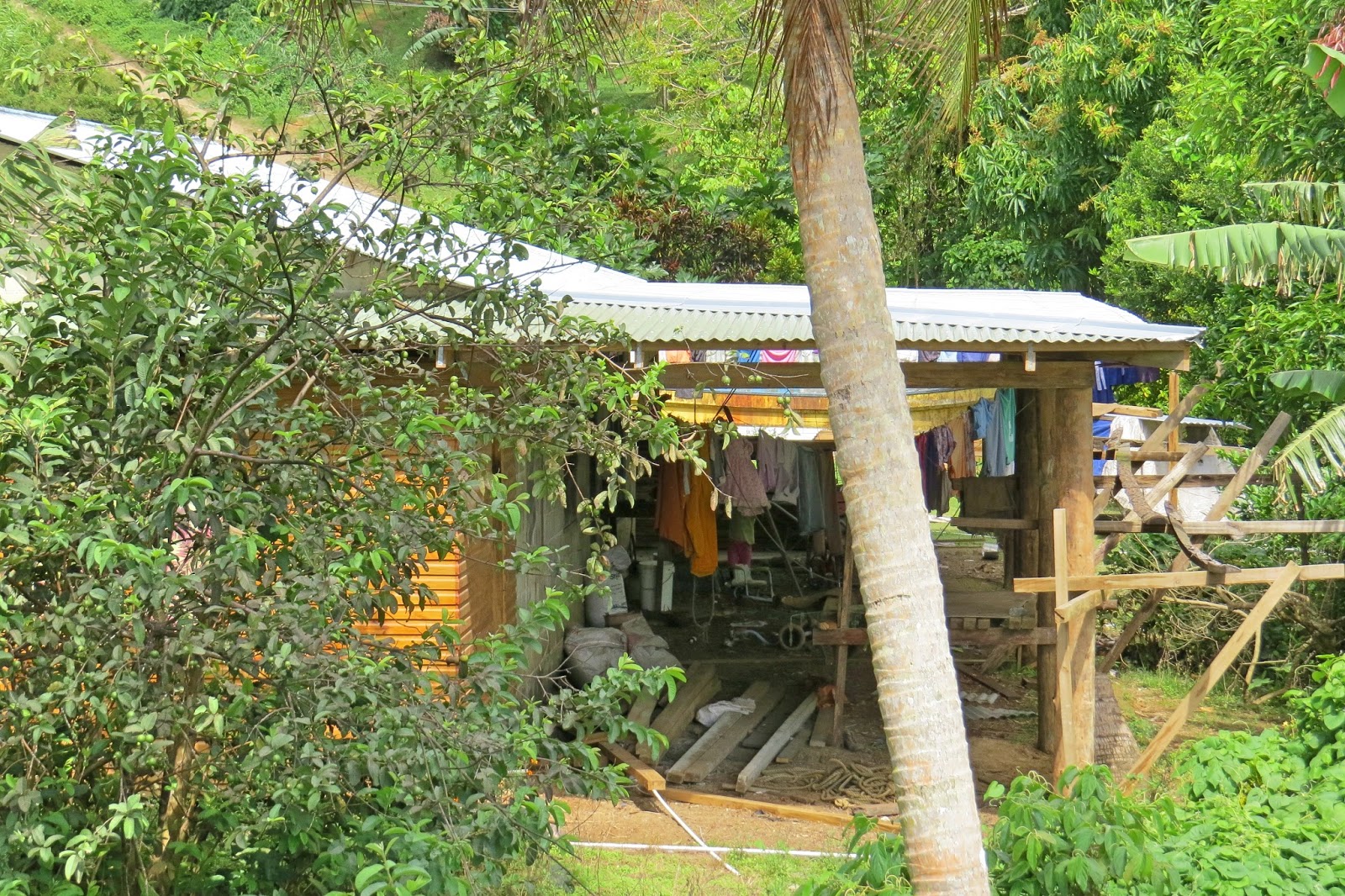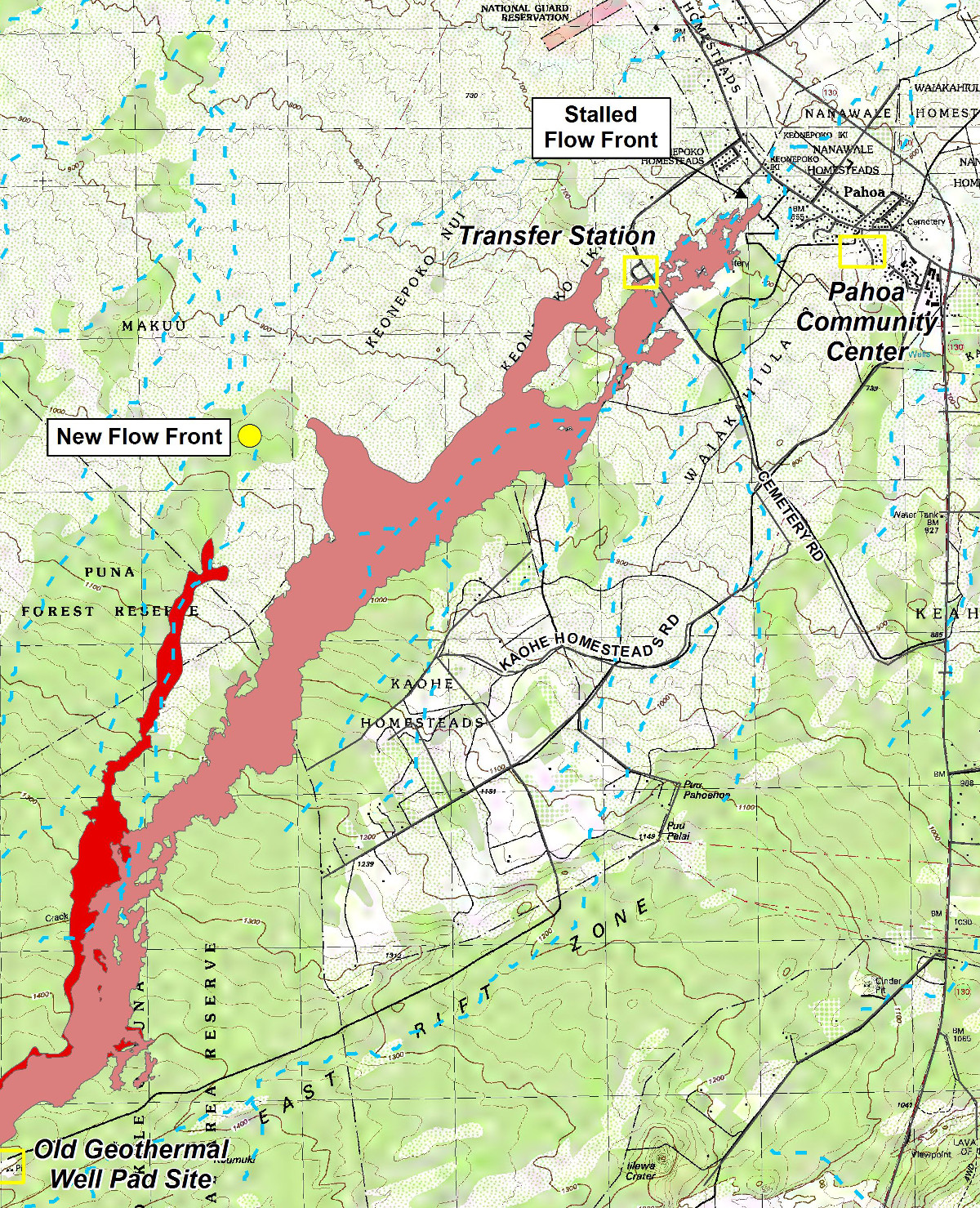 |
| As we slowed down the car to take photos of the sea, my eyes caught something black moving at a distance. Getting out the car where there was no fence to keep these piglets contained, we squealed with delight, as did this little white piglet who seemed happy to see us. |
With a mostly sunny day, we could hardly wait for Ratnesh to arrive to take us out to tour the local scenery. This island and this particular area are most commonly visited by tourists who are avid scuba divers, snorkelers, and seminar attendees at the world-renowned speaker Tony Robbins at his resort, Namala (more on that later after our upcoming visit and tour).
There aren’t as many tourist attractions here with a total of only 14 listed on Trip Advisor’s website that doesn’t include scuba diving. We already visited a few of these sites and will partake in some of the others that don’t include scuba diving.
 |
| I guess those who’ve been following us know that I love pigs. |
Instead, we immerse ourselves in what appeals to us more than any tourist attractions, the life of the people of Fiji, living for generation on this small island of Vanua Levu, living a life of joy and happiness, always with a warm smile on their faces and a heartfelt “bula!”
If seeing and being only a small part of their lives during our short three-month stay is all we do, we’ll have experienced more than any brochure or promo piece could ever have accomplished.
To our good fortune, with Ratnesh as our guide and driver, a kindly and good soul with powerful religious convictions, we are allowed an inside peek into the lives of his people going back many generations. He shares snippets of their traditions with us as we drive.
 |
| It appears there were no less than five piglets. The mom was contained within this wood structure, but the piglets could easily wander about. |
Although we ask him questions as we drive, we respect the boundaries of those areas he chooses not to discuss, instead of focusing on that area in which he takes great pride, like yesterday when he shared the stories of the harsh treatment of Fijians before they gained their independence on October 10, 1970.
Included in this link is the detailed history of the Fijian Islands that history buffs may enjoy reading. Reading this site gave us a clearer perspective of Fiji’s history, its resourceful people, and its long road in the development of its independent status.
With the holiday upcoming in a week, we’ll ask the locals as to the expected celebrations and how, if possible, we may participate, only possible for us with transportation. Next time we see Ratnesh, we’ll ask about his plans for that day, if in fact there is a big celebration in Savusavu.
 |
| There was no fence keeping the piglets from wandering off. This wood structure was located on the ocean side of the road with no house nearby other than those across the main road that led to the village. |
Yesterday, we drove for two hours to see those areas that Ratnesh explained we may find most interesting. He reveled in our enthusiasm over the “simple” aspects of life in Fiji, whether it be an unusual rock formation, a minuscule island with three trees growing, or a blue lagoon, one would imagine only in their dreams.
It was a glorious day followed up by him dropping us in the center of the village to tend to another customer, promising to return in an hour, giving us plenty of time to wander about the village, stopping in shops and various establishments leaving us ample time to purchase vegetables in the Farmer’s Market and a dozen items in the tiny three aisle grocery store.
 |
| The closer we approached, the closer these two came to toward us. We stayed back to avoid disturbing the huge mom contained in the pen. |
Much to our delight, two of the several grocery store helpers pointed out that fresh mushrooms had arrived (we purchased all three packages) and two other others we’d previously been unable to find; cream cheese (we purchased all four packages) and a “turner” (spatula for flipping eggs).
The helpers were thrilled that the items we inquired about had arrived. Maybe it’s pompous to suggest they ordered these specifically for us but, by the way, they expressed such enthusiasm when we put them into our trolley, we imagined they did in fact have influence in the arrival of these items. We expressed our gratitude with multiple “vinakas” and smiles on our faces.
 |
| As we walked away, the adorable white piglet came toward us, “Hey, where are you going?” |
As planned, Ratnesh returned in less than an hour as we were checking out. We loaded the car with our stuff and off we went to see Helen at Fiji Meats much further down the road.
When we arrived to a sign on the door stating, “Back at 4,” we only had to wait a couple of minutes until her return. By the time she had the door open, no less than a half dozen shoppers were waiting to make their meat purchased. The two roasted chickens we ordered early in the morning were ready to go in the heated roaster.
 |
| The ferry that was awaiting passengers for its daily run to the main island of Viti Levu takes several hours. |
A pair of anxious tourists ahead of us in line expressed their desire to purchase the chickens in the roaster that were earmarked for us. Helen politely explained she was holding them for us from our order early in the day. They run out of these chickens each day and it’s imperative to preorder if arriving at 12 pm.
Had we not planned our entire week’s menu and already shopped for all of the ingredients, we may have been willing to share. But, with no car of our own, and Thursday, our new shopping day when mushrooms arrive at the market in the morning, we’d have been one day short of making it to next Thursday.
The small freezer packed with ice cube trays prevents us from “stocking up” on anything more than what we’d use in one week. We’ve got meal planning worked out, down to a science.
 |
| The beach along the drive to the village. |
On the way home, I checked the camera to discover I had enough photos to share for many days to come. Before bed, I went through every photo, eliminating the “duds” leaving those in place we’re excited to post, today’s is no exception.
As we share these photos over the next several days, the theme and accompanying stories will evolve, as we continue to discover more and more about this lovely island and people of Vanua Levu and this sleepy village of Savusavu and its surroundings.
Enjoy the day!
Photo from one year ago today, October 1, 2014:
 |
| Here we are in Hilo on the Big Island, one year ago, when our ship docked at the port. Although we’d be living in Hilo for six weeks beginning in December when our family would begin to arrive, we decided to take a bus which proved to be the wrong bus and we ended up at an odd location. Check here for details as we laughed over faux pas. |




























































































































